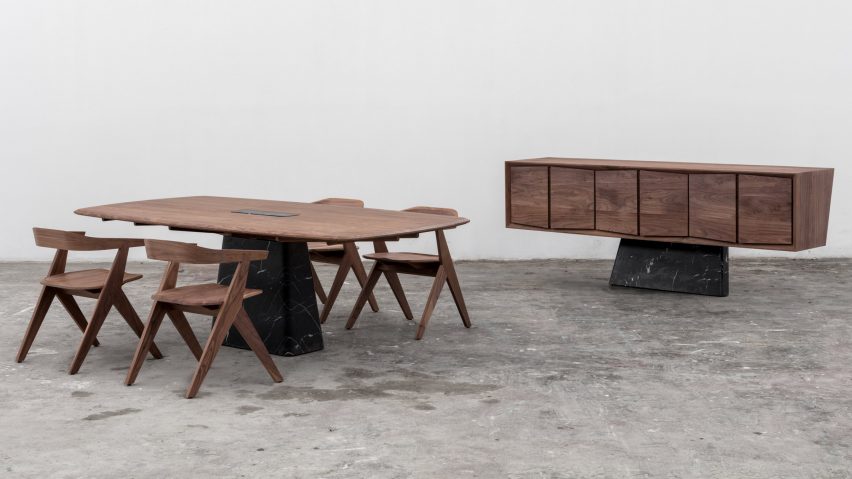Mexican design studio Esrawe has created a long wooden cabinet that balances on a proportionally small marble base, as part of a furniture collection debuting at this week's Zona Maco art fair.
The Dolmen Collection contains a set of dark walnut designs ranging from credenzas to dining tables and chairs, and a set of lighter white oak seats.
"The Dolmen Collection is based on the exploration and search of balance between elements with different materiality," said Esrawe Studio, led by designer Héctor Esrawe. "This exercise exalts the physical properties of stone and wood creating a tension between the suspended element and the support element."
Both the sideboard and dining table feature wooden tops supported by black marble bases. These bases – although different shapes – both gently taper from bottom to top, and feature rounded edges.
The Trinchador Dolmen credenza's wooden portion is positioned centrally against the base and attached at the back. The slight angle from vertical of the support, which has a triangular cross-section, creates the illusion that the cabinet it holds up is defying gravity.
This long wooden storage unit has three drawers across its front, with panels shaped to form zigzagging lines along the top and bottom.
Meanwhile, the base for the Dolmen Dining Table peeps through its walnut top. The flat table surface has softly curved sides and chamfered edges, and is kept rigged by wooden slats criss-crossed underneath.
It is accompanied by the Kanji Chair, which is formed by a rounded back held up by two upside-down, Y-shaped legs on either side of the seat.
Alternatively, the Compás Chair provides the option for a lighter-coloured frame and an upholstered seat.
The collection is making its debut at the Zona Maco art fair, taking place 7-11 February 2018. The event is held biannually in February and September in Mexico City.
Esrawe Studio is among Mexico's best-known design studios, and has previously produced cabinets based on the process of making mezcal, a series of ceramic vessels with shapes that gradually turn inside-out, and lamps controlled by sliding or pivoting brass elements.
Photography is by Pablo Da Ronco.
Project credits:
Design Team: Héctor Esrawe, Manuel Bañó, Federico Stefanovich, Alejandro Ramírez

